From manual to automatic lubrication with the simalube single-point lubricator - a change that's worth it! But what needs to be taken into account in this respect? What challenges exist?
As simple as it may sound and as simple as the simalube lubricant dispensers are in their application, there are still certain things that must be considered during a first-time installation in order to ensure a flawless and continuous lubrication.
Bearings used for years
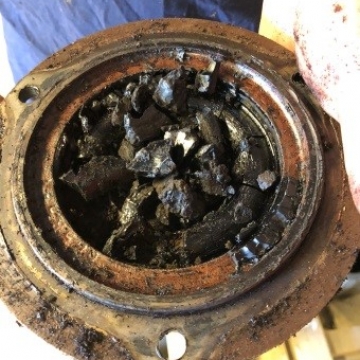
Image 1: This bearing should have been lubricated with simalube, but it did not work. The reason for this is a completely contaminated, oxidised bearing that had been in use for years, long before simalube was used to lubricate it.
We are often unaware of a roller bearing’s service life situation and it is not uncommon that the bearings have not been changed for years, so no one really knows whether the bearings have actually been lubricated regularly and with the right lubricant. Also, in many cases we do not know what the roller bearing looks like from the inside. Does it already have any wear and tear? Are there old grease residues that can place additional stress on the bearing and possibly even overheat it?
In these situations, it is difficult to achieve a satisfactory result with automatic lubrication. This makes it all the more important to talk openly with clients about these challenges. With “old” bearings, it is essential to lubricate the lubrication lines well by hand with the grease gun. This ensures that the simalube can work without counterpressure. However, should a sudden downtime occur because the roller bearing happens to have reached the end of its service life, the customer is aware of this from the very beginning.
Prelubricate the components
Most users are aware that long hoses and lubrication lines must be pre-lubricated with the same lubricant as that applied by the simalube automatic lubricator. However, smaller components such as grease nipples, bends and extensions are often forgotten, which is not too serious for the components themselves, but results in the lubricant taking longer to get to the bearing where it is actually needed. If all components are prelubricated and already filled with lubricant, this process is massively reduced.
Additional: It must be possible to prelubricate the lines and lubrication points with the manual grease gun without any effort. If the lubricant does have to be applied with great force, the dispenser does not have to be mounted at all. The counterpressure is too high.
The simalube IMPULSE pressure booster should also be prelubricated to ensure that the lubricant reaches the point to be supplied as quickly as possible. The following animation video shows exactly how the filling of the IMPULSE pressure booster works:
Installing simalube correctly
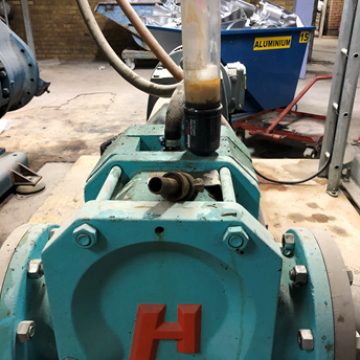
Image 2: The lubricant has separated while in operation - residues of the thickener remain in the dispenser and the dispenser does not empty completely.
The simalube lubricator is easy to use and almost self-explanatory. So, it’s nothing to be afraid of. Nevertheless, especially for the initial installation, it is important to follow the most important installation steps one by one. Potential hazards that can affect an installation with an automatic lubrication system include vibration, excessive heat (> +55°C) and extremely low temperatures (< -20°C). But, also, counterpressure that is too high, triggered by lubrication lines that are too long and/or narrow or by the application itself, can cause the lubricant dispensers to function only to a limited extent or not at all. In this case, the dispenser does not empty completely, only partially, and the lubrication point is not supplied with the desired amount of lubrication. For applications that were previously lubricated irregularly and manually by hand, there is probably no additional damage occurring here. However, there are also sensitive applications that rely on pinpoint lubrication. Here, it is even more important to continuously apply the correct amount of lubricant. A failure of an automatic lubricant dispenser here could cause major damage to the bearing.
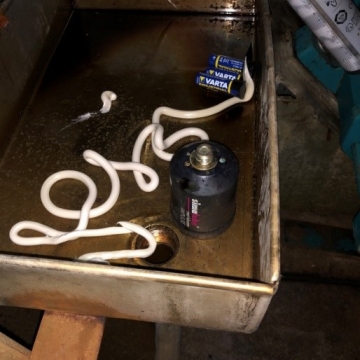
Image 3
When installing an automatic lubrication system for the first time, it is often not clear what an optimal installation should look like. If you then have to face various challenges, such as tight spaces and harsh environmental conditions, such as high humidity, dust, chips, chemicals, etc., initial installations can appear to be seemingly unsolvable problems. In this case: don't despair, ask simatec!
Image description 3: If the counterpressure exceeds 10 bar, the simalube IMPULSE can no longer supply the lubricant to the lubrication point. Nevertheless, the gas producing cell generates gas and builds up pressure. When the dispenser is dismounted, the retained grease comes out.
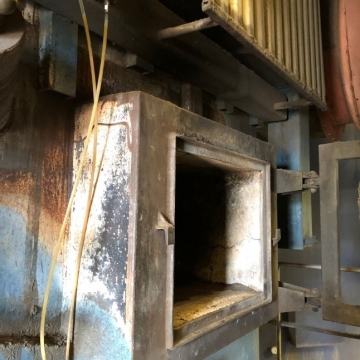
Image 4
Even if there is no standard solution for every application, we at simatec, along with our distributors, have already successfully installed millions of simalubes for customers worldwide and have been able to find solutions for a wide variety of lubrication problems. It is, therefore, important, especially for special applications with challenging conditions, to check the initial installation at regular intervals.
Image description 4: Long, upwards-mounted lubrication lines in a hot environment (incinerator in a sawmill) lead to an oil separation and ultimately to clogged lubrication lines. The bearing is no longer supplied with lubricant. High ambient temperatures can also lead to the deformation of the dispenser.
After the first successful emptying, it can be assumed that the installation is working well and, if no unforeseen problems occur, it can also be left to run unattended.
How to do the installation correctly can be seen here.
The right lubricant is just as important as the correct installation
An installation can only function smoothly if all parameters are correct. This includes not only the right accessories, but also the right lubricant. For bearings that have so far been lubricated by hand and require special lubricants, it must be clarified whether the lubricant will work at all in such lubrication systems before switching to automatic lubricators. This is because, depending on the lubricant, oil separation can occur (thickener and oil separating) when used in automatic lubrication systems, such as the simalube single-point lubrication system, which means that the lubricant cartridge cannot empty completely. The soap, which would actually be there to transport the oil to the right place, remains as a residue in the dispenser housing. The lubrication point itself is not sufficiently supplied with lubricant, which in turn can lead to bearing failures. Therefore, it is important to clarify whether lubricants that have not already been used successfully in other lubrication systems are actually suitable for lubricant dispensers. simatec carries out such tests in its laboratory in Wangen an der Aare. A lubricant is tested in 3 different units and under different conditions: set to 1 month at room temperature, set to 3 months at room temperature and set to 1 month at 55°C ambient temperature. The results are summarized and collected in a reference book. The reference book already includes a large number of tested lubricants and is constantly being expanded.
The following images show the test results of a lubricant at all 3 levels. This lubricant has been declared “conditionally usable” due to its change in consistency at the different levels, which means that the lubricant works flawlessly for short, one-month periods of use and at room temperature (20°C) in simalube lubricant cartridges, but shows an oil separation at higher temperatures and during longer periods of use and is not recommended for such applications.
Even more important than an oil separation is whether the dispenser empties. Therefore, the piston level is always noted after each test.
Image description 5:
125 ml dispenser with setting of 1 month at room temperature. Result: slight oil separation.
Image description 6:
125 ml dispenser with setting of 3 months at room temperature. Result: moderate oil separation.
Image description 7:
125 ml dispenser with setting of 1 month at 55 °C. Result: severe oil separation.
What should be done if something goes wrong?
As long as initial installations are well observed and controlled, no major damage can occur, even if an initial solution approach turns out to be unsuitable. It is important to document how a lubrication point or a machine has behaved since the initial installation (any changes in noise, unfamiliar smells, changes in appearance, etc.). The dispenser itself can also provide clues as to why an installation is not working. An example of this: with a dispenser set to 2 months, the piston has hardly moved, and when the dispenser is removed, the backlogged lubricant now runs out. This shows that the lubricator would work properly, but does not have enough pressure to supply the lubrication point with the lubricant. Conclusion: the counterpressure is too high. In this case, the cause must be determined. The best way to do this is by process of elimination. First, if there is a lubrication line, it should be disconnected from the lubrication point. After that, the lubrication point can be checked first and then the line. Both should be able to be lubricated thoroughly with the grease gun without force. Generally, the dispenser should be mounted directly at the lubrication point whenever possible. If a lubrication line is required between the dispenser and the lubrication point, the line must always be as long as necessary but also as short as possible to avoid unnecessary counterpressure. Elbow joints should also be avoided as much as possible and the internal diameter of the line or hose should be a min. of 6 mm. A reduction in the line cross-section should only be installed directly at the lubrication point if this cannot be avoided. If the lubrication point cannot be lubricated thoroughly with the grease gun either, the bearing must be uncovered and checked. For longer lubrication lines up to 4 m in length, the simalube IMPULSE pressure booster (max. 10 bar) can achieve the desired result.
If you have any questions about installations and lubricants, or if you are unsure about first-time applications, our team will be happy to help. Thanks to various photos, videos and detailed information about the lubrication point, advice can also be given remotely. With our worldwide distribution network, we also ensure that we are as close as possible to our customers. Find your local dealer here.


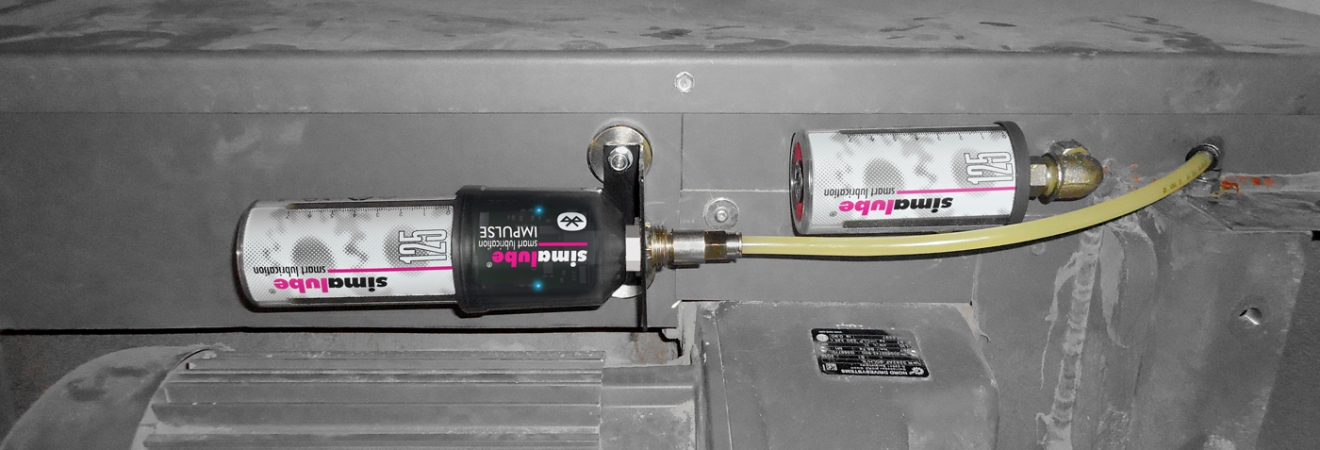



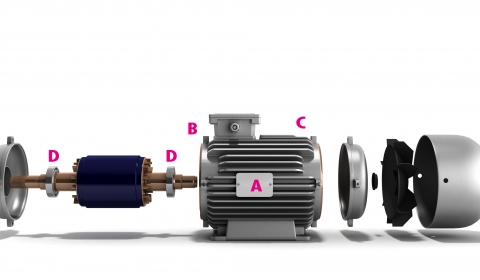


Your opinion on this article